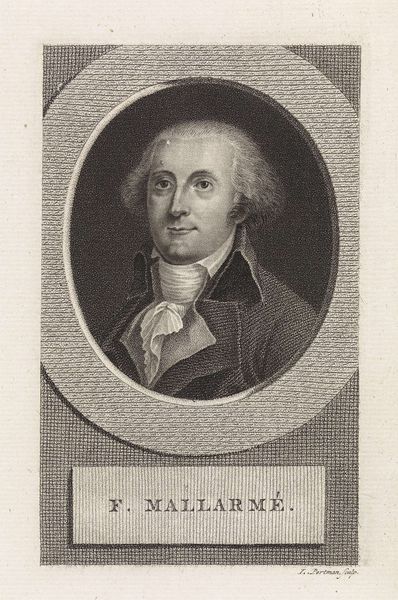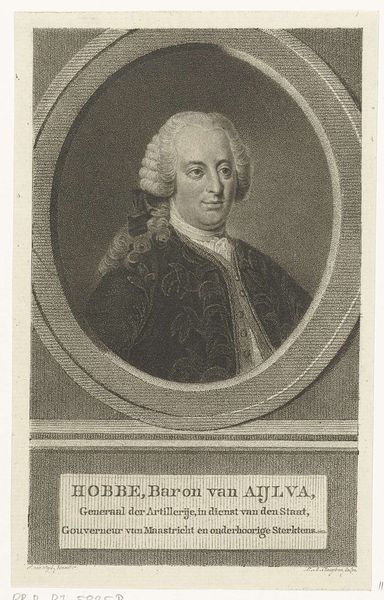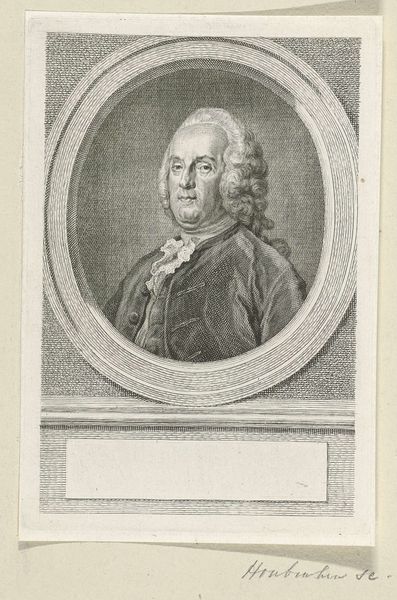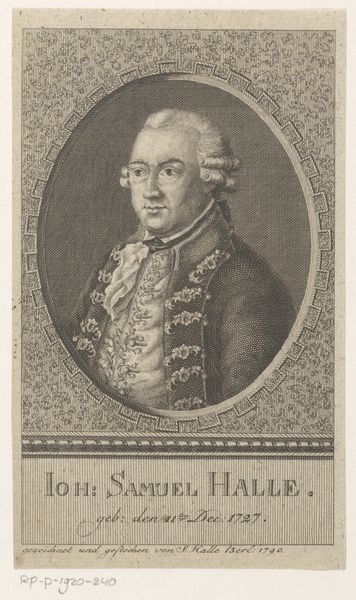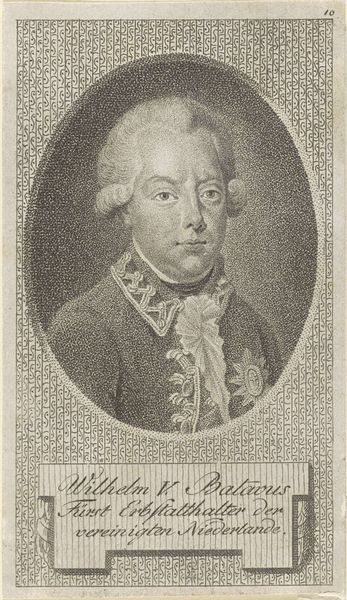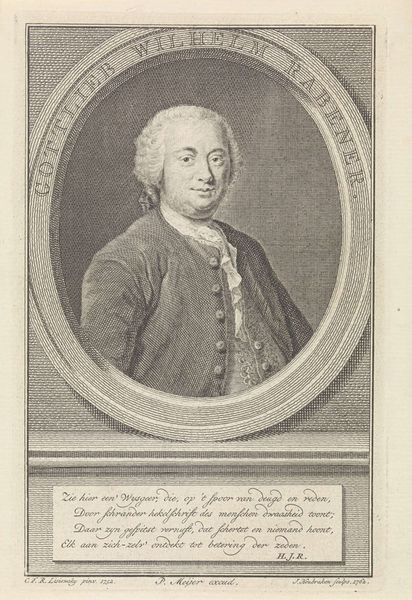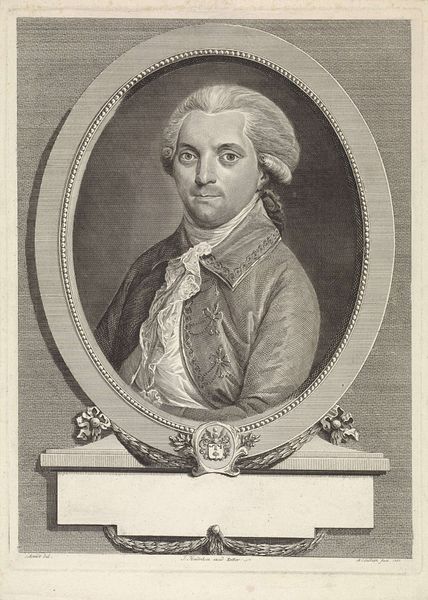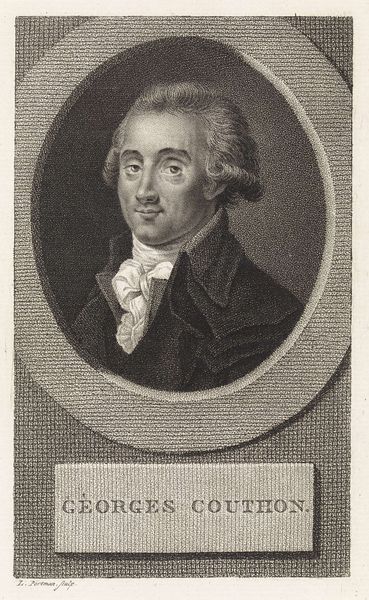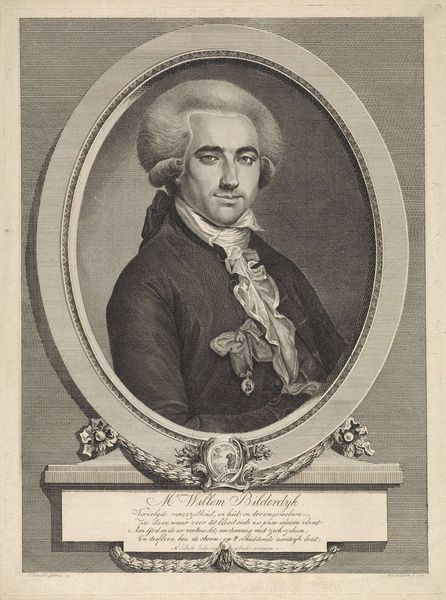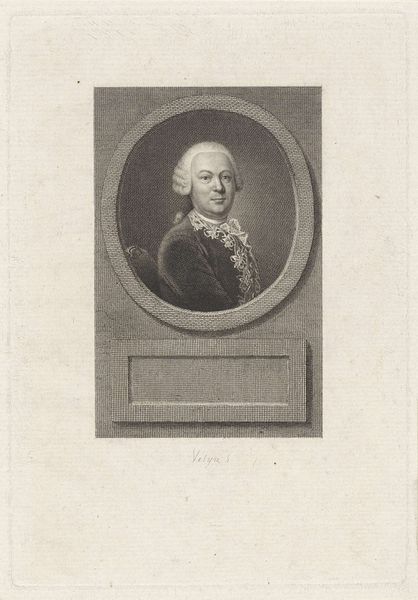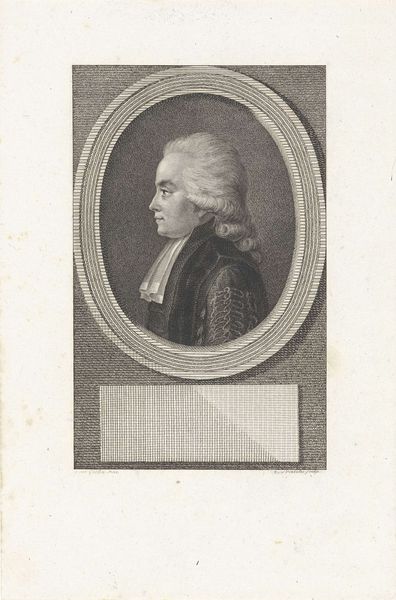
engraving
#
portrait
#
neoclacissism
#
old engraving style
#
historical photography
#
19th century
#
engraving
Dimensions: height 158 mm, width 97 mm
Copyright: Rijks Museum: Open Domain
Curator: Ah, yes. Here we have a portrait of Louis-Sébastien Mercier. This engraving, created by Lambertus Antonius Claessens, likely dates to between 1792 and 1808. Editor: My first impression is that this has a distinctly public character, doesn't it? It is obviously designed for wide dissemination, a figure framed within these graphic structures to celebrate and propagate an idea. Curator: Precisely. As an engraving, it lends itself to mass production. Think of the socio-political implications of distributing an image like this during a time of revolution. The material allows for easy replication, putting Mercier’s likeness in many hands. Editor: Absolutely, this image had a public purpose. Mercier was a polemicist, invested in how his image circulated. The neo-classical elements, framing him in this simple oval, create an effect of immediate recognition and legibility for the rising middle class. The image flattens class difference as much as it propagates an ideal. Curator: Indeed. Notice how the engraving technique itself--the lines, the hatching--demands skill and time, a deliberate choice that adds value to the piece. And the paper quality surely impacted its longevity and circulation. Editor: The choice to represent him this way, situated as he was within the political whirlwind, elevates him as a figure representing something. Someone wanted Mercier visible to all, contributing to the narrative during the historical moment. It shows how potent printed portraits could be in shaping public discourse. Curator: Considering the material reality of its creation, distribution, and reception gives us a fuller understanding of the art's purpose. Every stage—from the artist’s choices to the engraver's technique, to the mode of circulation—tells a story about the context in which it was created. Editor: Understanding how imagery functions socially provides us insights into how politics were navigated through aesthetics. A portrait, like this engraving of Mercier, acts as both artifact and instrument, reflecting as it drives the historical current. Curator: Examining the processes of production brings this artwork to life, revealing its embeddedness within a particular historical moment. Editor: Considering this piece as part of visual culture opens so many questions on the production of celebrity and historical narratives.
Comments
No comments
Be the first to comment and join the conversation on the ultimate creative platform.
